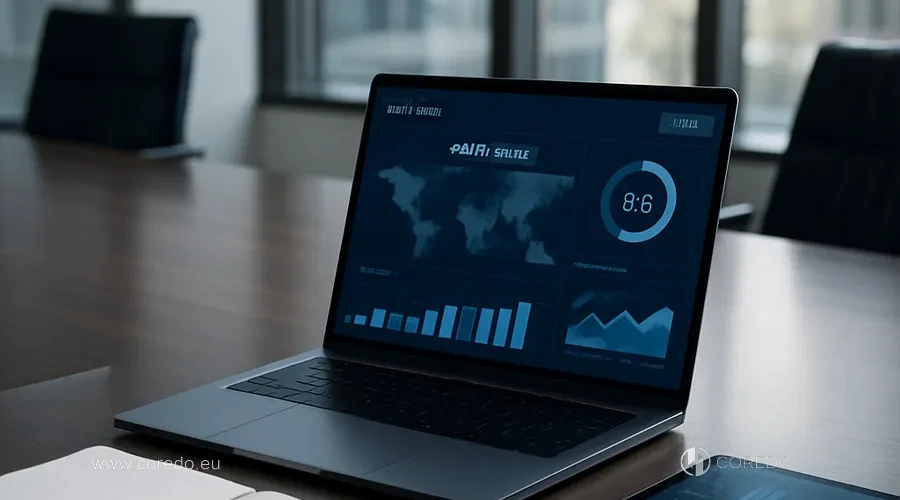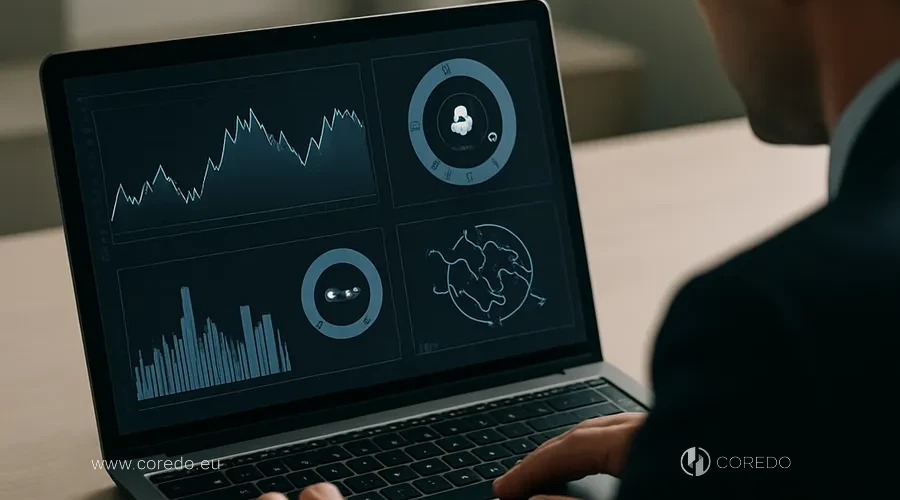In 2024 the global financial services market faced an unprecedented rise in fines for anti-money laundering violations: in Europe alone the total amount of sanctions exceeded €6 billion, and the average fine for financial institutions increased by 45% compared with the previous year. But the numbers are only the tip of the iceberg. Behind every fine are frozen accounts, loss of access to international payments, blocked transactions and, most importantly, severe reputational costs that can be fatal to a business.
Companies like ZISIF15, operating at the intersection of traditional and digital finance, are particularly vulnerable: their activities are under the scrutiny of regulators in the EU, Asia and the CIS, and requirements for transparency and transaction controls are tightened every year. In these circumstances AML audit becomes not just a formal procedure, but a strategic tool for protecting the business, minimizing risks and increasing investment attractiveness.
Essentially, an AML audit for ZISIF15 companies is a comprehensive review for compliance with international and local requirements in anti-money laundering and countering the financing of terrorism (CFT), including analysis of KYC processes, transaction monitoring, risk assessment and readiness to interact with regulators. Such an approach makes it possible not only to avoid fines and blocks, but also to build trusting relationships with banks, investors and partners.
AML audit for ZISIF15 in 2025

International standards in the field of AML compliance are constantly evolving. In 2025, the key benchmarks for ZISIF15 companies remain the FATF recommendations, as well as the EU directives: 4AMLD, 5AMLD and 6AMLD, which set standards for customer identification, transaction monitoring and reporting. In Asia and the CIS, requirements are increasingly being aligned with European and international norms, while local regulators introduce their own supervisory mechanisms.
COREDO’s practice confirms: for ZISIF15 companies it is critically important not only to have a formal AML program but also for it to be actually operational. Regulators require:
- The presence and regular updating of AML policies and procedures reflecting the specifics of the business and risks.
- Implementation of effective KYC procedures and beneficiary verification tools.
- Continuous AML monitoring of operations and control of suspicious transactions, including cryptocurrency operations.
- Preparation and storage of AML reporting (including SAR – Suspicious Activity Report) in accordance with the requirements of FATF and local regulators.
- Appointment of a person responsible for AML, internal controls and regular staff training.
Company AML audit: step-by-step process

Preparation for the AML audit
First step: a thorough review of KYC procedures and client Due Diligence mechanisms. COREDO’s experience shows that it is at this stage that the main vulnerabilities are revealed: outdated questionnaires, insufficient verification of beneficiaries, absence of a client’s digital profile.
Transaction monitoring and control
Reporting and interaction with regulators
A comprehensive AML review makes it possible to identify and eliminate gaps in advance, minimizing the likelihood of fines and sanctions. In case suspicious transactions are detected: promptly initiate an internal investigation and, if necessary, freeze accounts until the circumstances are clarified.
AML audit of cryptocurrency transactions

- AML monitoring of transactions using blockchain graph analysis algorithms and risk scoring of crypto addresses.
- Automated AML screening of cryptocurrency taking into account transaction specifics (mixers, privacy coins, DeFi).
- Use of RegTech solutions to integrate data from external sources (sanctions lists, databases of suspicious addresses).
How to scale an AML program during expansion

Expanding business into new markets requires adapting the AML program to the requirements of each jurisdiction. COREDO’s practice shows: there are no universal solutions, and a successful strategy is built on flexibility and deep localization.
- For the EU, compliance with 6AMLD, implementation of eKYC, and automation of reporting are critical.
- In Asia – consideration of national standards, integration of local registries, and staff training on the specifics of regional risks.
- In the CIS – regular auditing of current procedures, updating policies, and moving from manual monitoring to automated systems.
When registering companies in Europe and Asia, the COREDO team always conducts a preliminary AML audit to identify potential gaps between corporate standards and local requirements. This approach helps avoid delays in opening bank accounts, reduce operational risks, and ensure sustainable scaling.
AML audit in international companies – best practices

- Integration of KYC/AML/KYT into a single platform, enabling monitoring of the entire customer and transaction lifecycle.
- Regular AML training for staff that reflects new threats and changes in legislation.
- Use of artificial intelligence and RegTech solutions to automate monitoring, transaction analysis and reporting.
- Conducting stress tests and scenario modelling to assess the resilience of the AML program.
How to evaluate the effectiveness of an AML program
Evaluating the effectiveness of an AML program: the key to increasing ROI and reducing operating costs. At COREDO we recommend using the following metrics:
- Number of detected and prevented suspicious transactions.
- Incident response time and SAR preparation speed.
- Ratio of false positives to confirmed alerts.
- Level of automation and integration with external data sources.
- Number and quality of trained staff.
Implementing a comprehensive AML system not only reduces the likelihood of fines, but also increases trust from banks, investors and partners. In the long term, this directly affects the company’s value and its competitiveness in the international market.
Comparison of AML audits in the EU, Asia, the CIS and Africa
| Region | Key requirements | Features for ZISIF15 | Typical risks | Recommendations |
|---|---|---|---|---|
| EU | 6AMLD, AMLR, AMLA | High fines, automation, eKYC | Sanctions risks, account freezes | Implement RegTech, prepare for compliance audits |
| Asia | FATF, local laws | Variety of requirements, increasing regulation | Money laundering risks via cryptocurrencies | Adaptation to local rules, staff training |
| CIS | 6AMLD, AMLR | Partial eKYC implementation, manual monitoring | Lower fines, local regulators | Audit of existing procedures, policy updates |
| Africa | FATF, local laws | Developing regulatory framework | Money laundering risks via cryptocurrencies | Implement automated systems, training |
Guide for ZISIF15 Leaders: Practical Steps
- Conduct a preliminary AML audit involving external experts to identify weaknesses.
- Update KYC procedures and implement digital onboarding.
- Implement automated AML systems for transaction monitoring and graph-based transaction analysis.
- Appoint a person responsible for AML and internal control, and regularly train the team.
- Ensure transparency of ownership structure and sources of funds.
- Develop and implement procedures for preparing and submitting SARs.
- Conduct regular stress tests and update AML policy in accordance with changes in legislation.
How an AML audit affects a company’s strategy
In today’s environment, an AML audit is not just a regulatory requirement but a strategic tool for risk management, enhancing transparency and trust. Companies that invest in developing AML compliance gain a competitive edge: access to international markets, the trust of investors and partners, reduced costs for internal investigations, and a lower likelihood of fines.